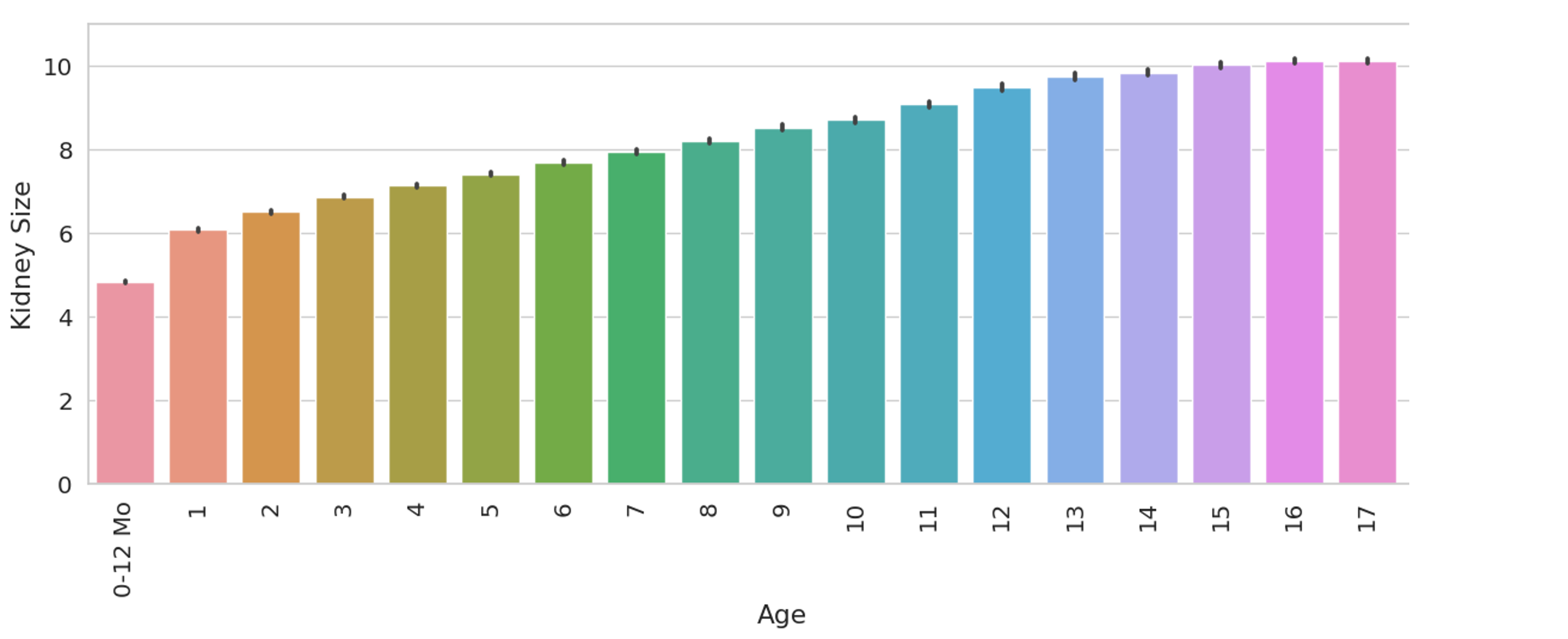Nephrology
Session: Nephrology 1
9 - Pediatric Kidney Size and Growth: Time for new percentiles? First Machine Learning Approach Using Natural Language Processing
Saturday, May 4, 2024
3:30 PM - 6:00 PM ET
Poster Number: 9
Publication Number: 9.1199
Publication Number: 9.1199
- BV
Bernarda Viteri, MD, MTR (she/her/hers)
Physician
Children's Hospital of Philadelphia
Philadelphia, Pennsylvania, United States
Presenting Author(s)
Background: Ultrasound is a safe modality to measure kidney length. Current charts of kidney size are based on relatively small samples that lack accurate age grouping and consequently often require to be adjusted by anthropometric measurements.
Objective: This study harnesses natural language processing and a large radiology report repository to calculate new renal length normative values.
Design/Methods: We retrieved abdominal ultrasound reports for children ( < 18 years of age) between 2012 and 2022 in a tertiary academic children’s hospital (Illuminate InSight). Reports were filtered for “normal kidneys,” excluding all types of kidney (or renal) abnormalities (e.g., ectopia, dysplasia, dilation). Natural language processing was used to extract kidney measurements from the reports text using Python. Python was also used to develop descriptive analysis, and to exclude premature children and additional pathological terms identified in the process. Anthropometric data was not available. Normative values were established by age (per year) 0 to < 18 years. Additional categories were created for children < 1 year of age (0-1 weeks, 1 week to 4 months, 4 to 8 months, and 8 months to 1 year).
Results: A total of 24664 ultrasound reports were collected (female: 52.87%; median age: 6.78 years, IQR: 11.18). There was no difference in the kidney length between the right and the left kidney (median length: 8.1 cm for each side). The normative values were expressed as mean, median kidney length, SD, and IQR, per age group. When compared to Rosenbaum’s 1984 normative values (currently used at our institution), our series shows slightly smaller kidney lengths up to 8 years of age. For instance, at the age of 2 years, Rosenbaum's normative value was 7.36 cm (SD: 0.54) while our mean kidney length was 6.51 cm (SD: 0.87).
Conclusion(s): We established normative values that are overall similar but generally smaller than existing growth charts with larger standard deviations, which reduces the risk of mischaracterizing patients as having too small or enlarged kidneys. Moreover, our sample size, orders of magnitude larger than previous publications, validates normative values with increased certainty. The use of natural language processing also opens the possibility of automated updates to existing values.

